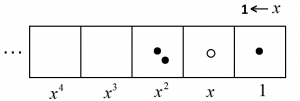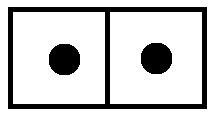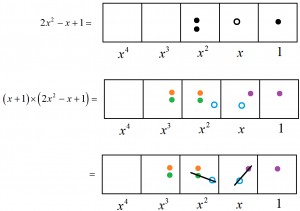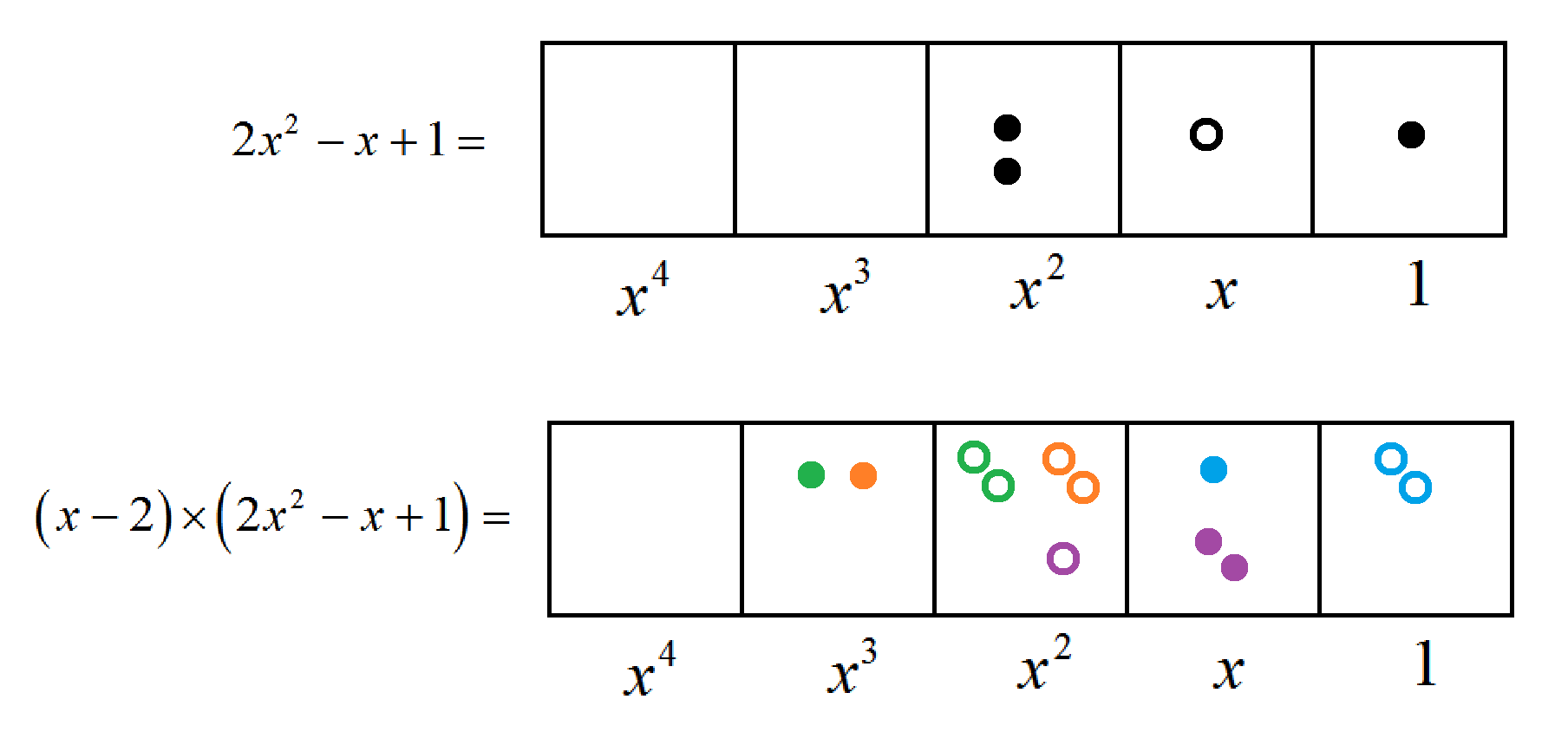Exploding Dots
6.7 (Optional) Multiplying, Adding, and Subtracting Polynomials
See how Goldfish & Robin multiply polynomials in this video where kids explain math to kids.
Can we multiply polynomials? You bet!
Here’s the polynomial \(2x^2-x+1\).

If we want to multiply this polynomial by \(3\) we just have to replace each dot and each antidot with three copies of it. (We want to triple all the quantities we see.)

We literally see that \(3\left(2x^2-x+1\right)\) is \(6x^2-3x+3\).
Suppose we wish to multiply \(2x^2-x+1\) by \(-3\) instead. This means we want the anti-version of tripling all the quantities we see. So each dot in the picture of \(2x^2-x+1\) is to be replaced with three antidots and each antidot with three dots.

We have \(-3\left(2x^2-x+1\right)=-6x^2+3x-3\). We could also say that \(-3\left(2x^2-x+1\right)\) is the anti-version of \(3\left(2x^2-x+1\right)\).
Now suppose we wish to multiply \(2x^2-x+1\) by \(x+1\). Since \(x+1\) looks like this

we need to replace each dot in the picture of \(2x^2-x+1\) with one-dot-and-one-dot, and each antidot with the anti-version of this, which is one-antidot-and-one-antidot. (This is now getting fun!)

After some annihilations we see that \(\left(x+1\right) \times \left(2x^2-x+1\right)\) equals \(2x^{3}+x^2+1\).
Now let’s multiply \(2x^2-x+1\) with \(x-2\), which looks like this.

Each dot is to be replaced by one-dot-and-two-antidots, and each antidot with the opposite of this.

We see \(\left(x-2\right)\left(2x^2-x+1\right)=2x^{3}-5x^2+3x-2\).
Okay, you’re turn. Try \(2x^2-x+1\) times \(2x^2+3x-1\). Do you get this picture? (I’ve not colored it this time!) Do you see the answer \(4x^{4}+4x^{3}-3x^2+4x-1\)?

The process here is no different from the long multiplication of lesson 3.6, but one might have to contend with antidots now.
ADDING AND SUBTRACTING POLYNOMIALS
Adding and subtracting in base \(x\) is just like adding and subtracting in base \(10\). And it is easier in fact! Since we don’t know the value of \(x\) we will never explode dots. That is, we never need to perform “carries” as one does in base \(10\) arithmetic!

We can draw dots and boxes pictures of these in an \(1 \leftarrow x\) machine if we like.
Resources
Books
Take your understanding to the next level with easy to understand books by James Tanton.
BROWSE BOOKS![]()
Guides & Solutions
Dive deeper into key topics through detailed, easy to follow guides and solution sets.
BROWSE GUIDES![]()
Donations
Consider supporting G'Day Math! with a donation, of any amount.
Your support is so much appreciated and enables the continued creation of great course content. Thanks!
Ready to Help?
Donations can be made via PayPal and major credit cards. A PayPal account is not required. Many thanks!
DONATE![]()


